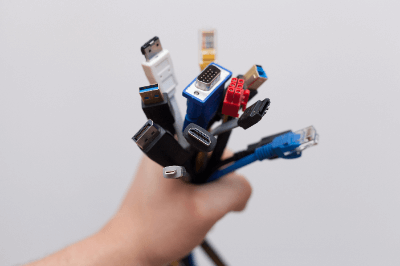What Is a Display Cable?

A display cable is a type of cable that connects a computer to a display. These cables are essential for transmitting image data from the computer to the display screen. They come in two primary forms: analog output and digital output, with digital currently being the mainstream method.
Uses of Display Cables
Display cables are widely used to connect computers to displays in various settings, from general households to industrial applications. These cables are also integral in connecting storage servers and distributed control systems in industrial environments.
Principle of Display Cables
1. Analog Method
In the analog method, a digital signal from the PC is converted into an analog signal for transmission. Analog signals, being continuous values, are more susceptible to noise, which can degrade image quality. This is why the VGA method, an example of an analog connection, tends to have lower image quality compared to digital methods.
2. Digital Method
The digital method is preferred for its ability to maintain the integrity of video signals without degradation. However, resolution capabilities can vary depending on the standard. HDMI, for instance, has the additional capability of transmitting audio alongside video. For high-quality image output, a display cable that supports such quality, like the DisplayPort method, should be chosen.
Other Information on Display Cables
1. Display Cables Standards
Analog display cables transmit data in an analog format, offering inferior image quality compared to digital cables. Digital cables, such as DVI, DisplayPort, HDMI, and USB Type-C, provide higher image quality and, in some cases like HDMI and USB, can transmit audio and video simultaneously.
2. Passive and Active Display Cables
HDMI and DisplayPort cables can be categorized as active or passive. Active cables incorporate an internal IC to process signals, maintaining signal quality over long distances. However, they may have stability issues due to signal conversion processing. Passive cables transmit signals directly without internal processing, making them ideal for short distances but less effective over longer ones. Active cables are recommended for long-distance transmission, and it is important to correctly connect the output source and destination as indicated by the IN and OUT markings on the cable.
Display Cable Conversion Connectors
To adapt display cable connectors for different standards, conversion connectors are used. While these connectors can adapt a cable to a higher standard, they cannot enhance the original image quality beyond the capabilities of the source standard.